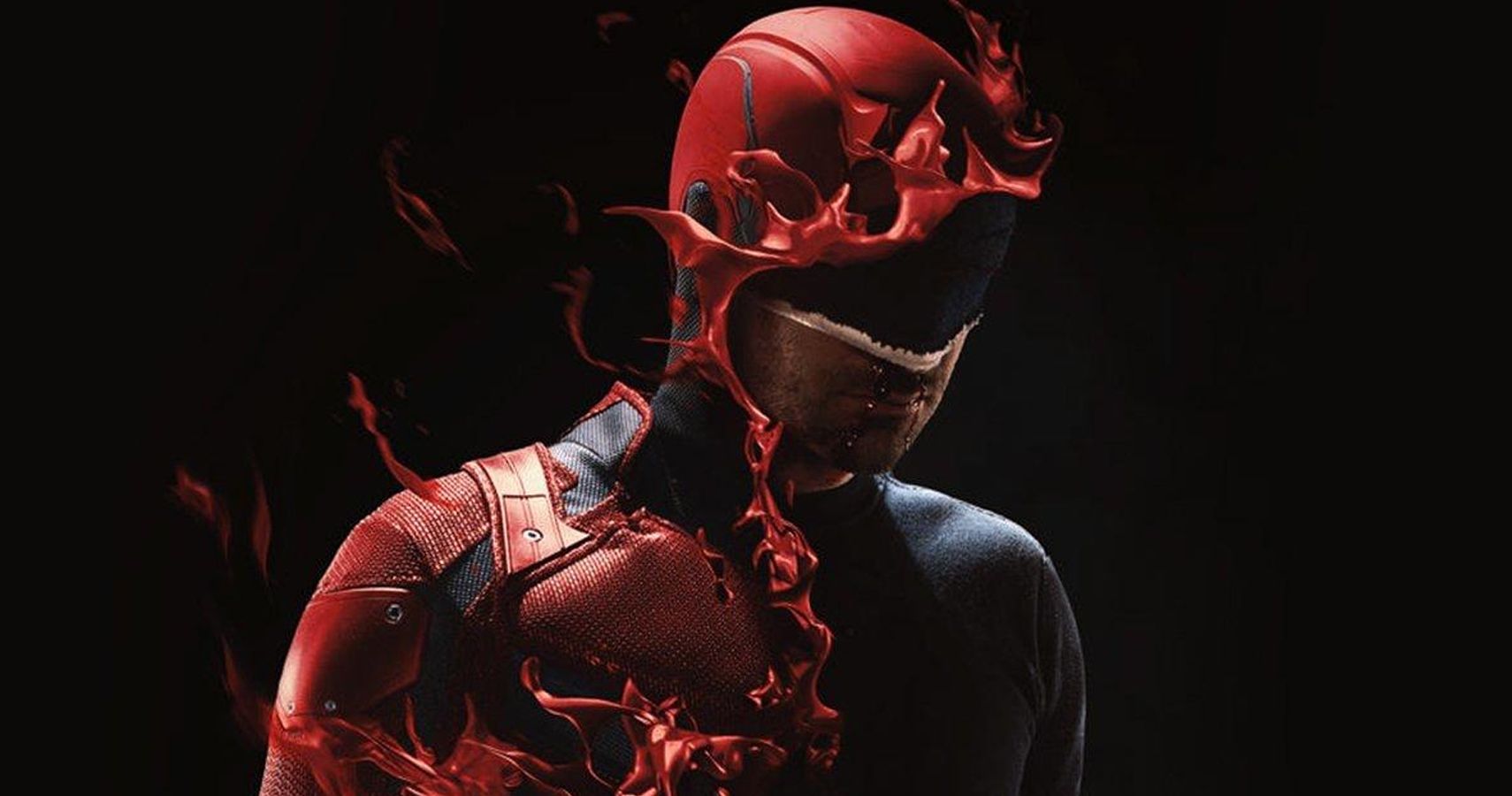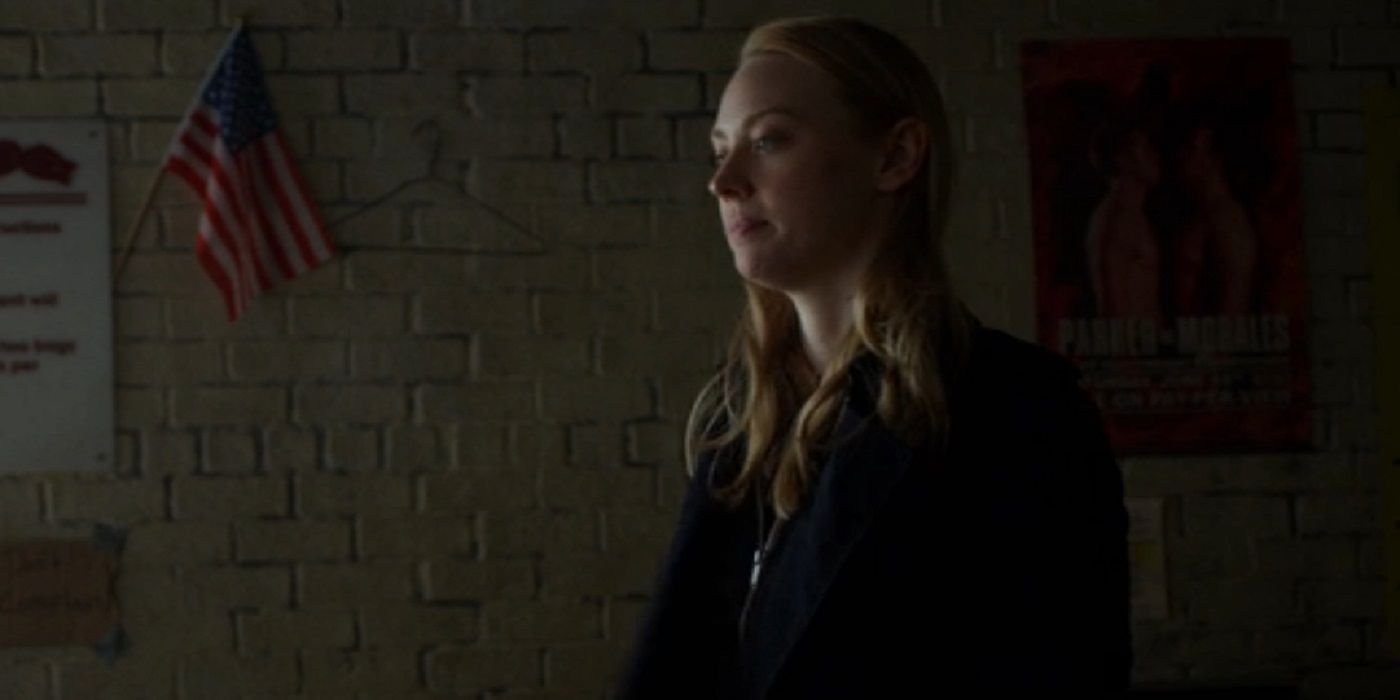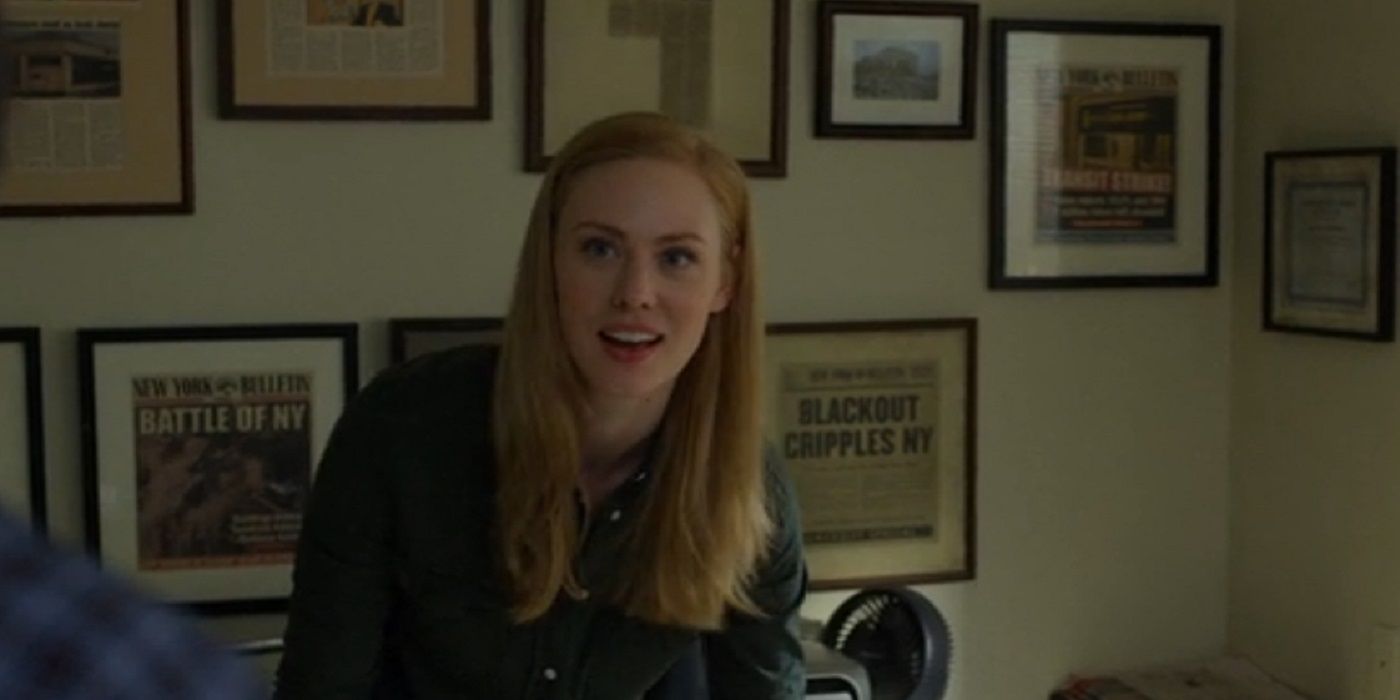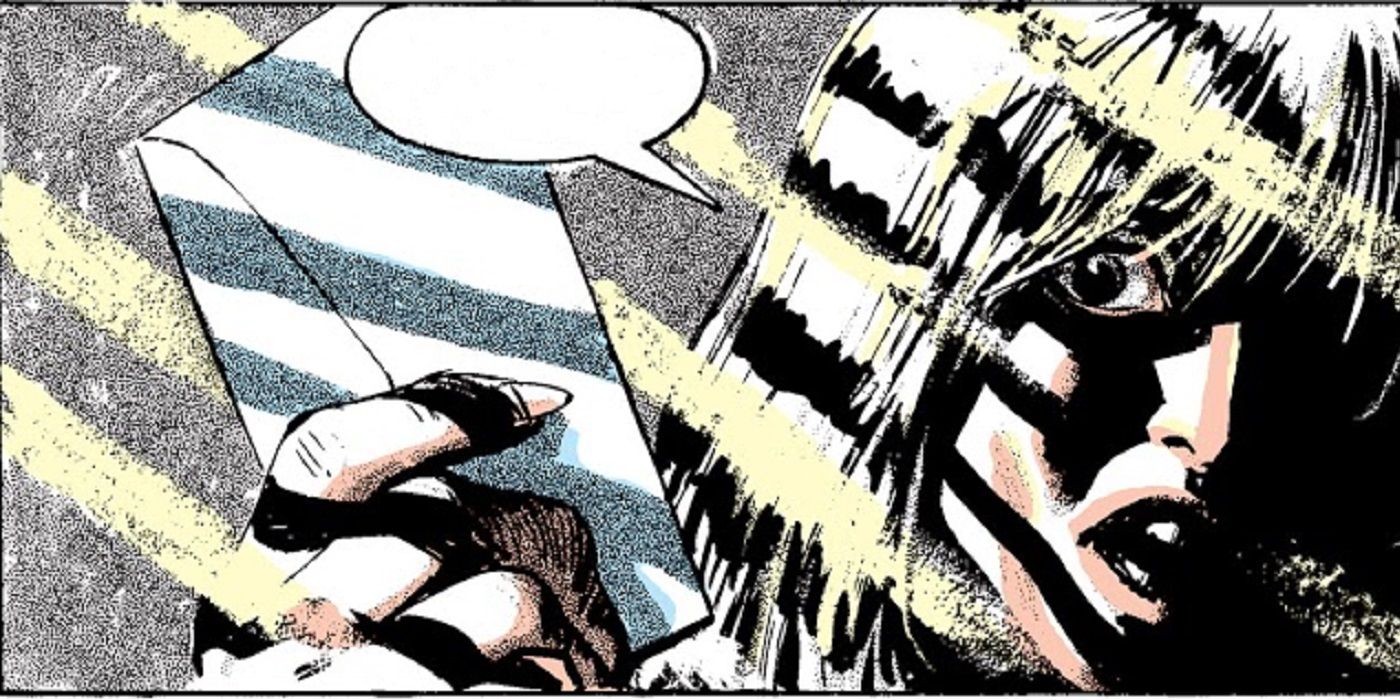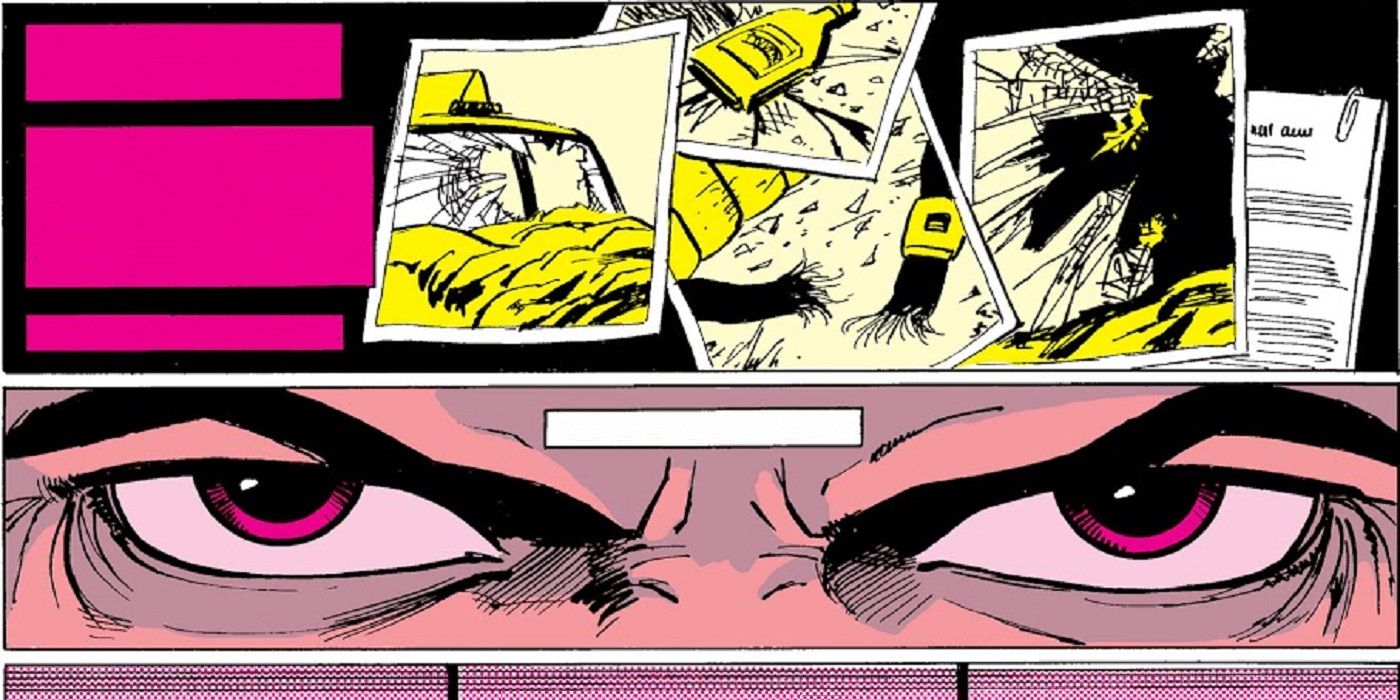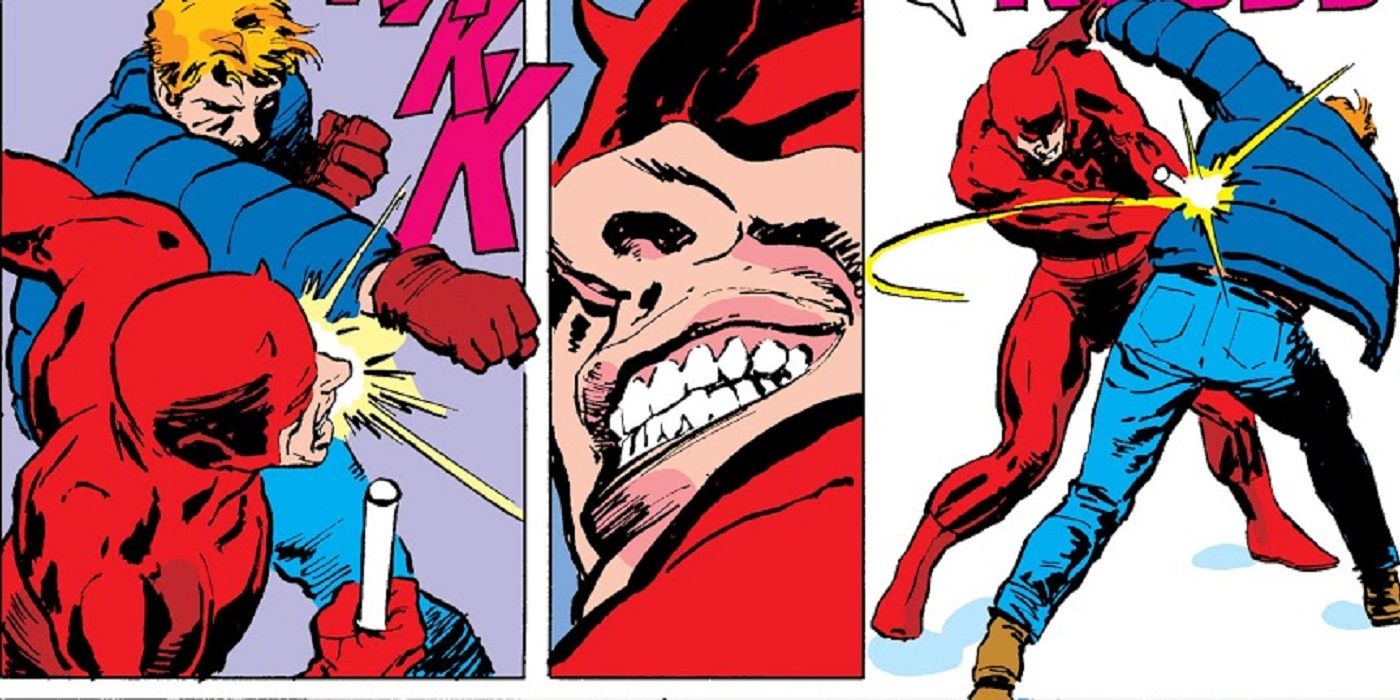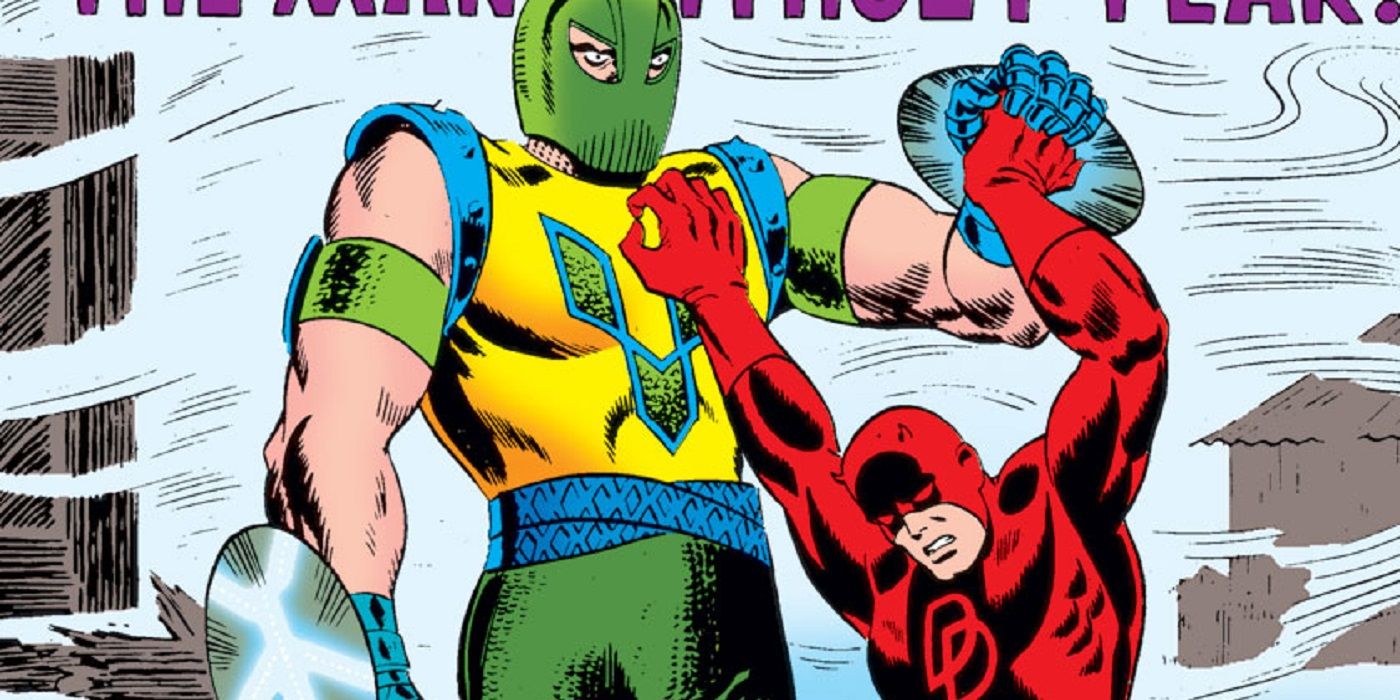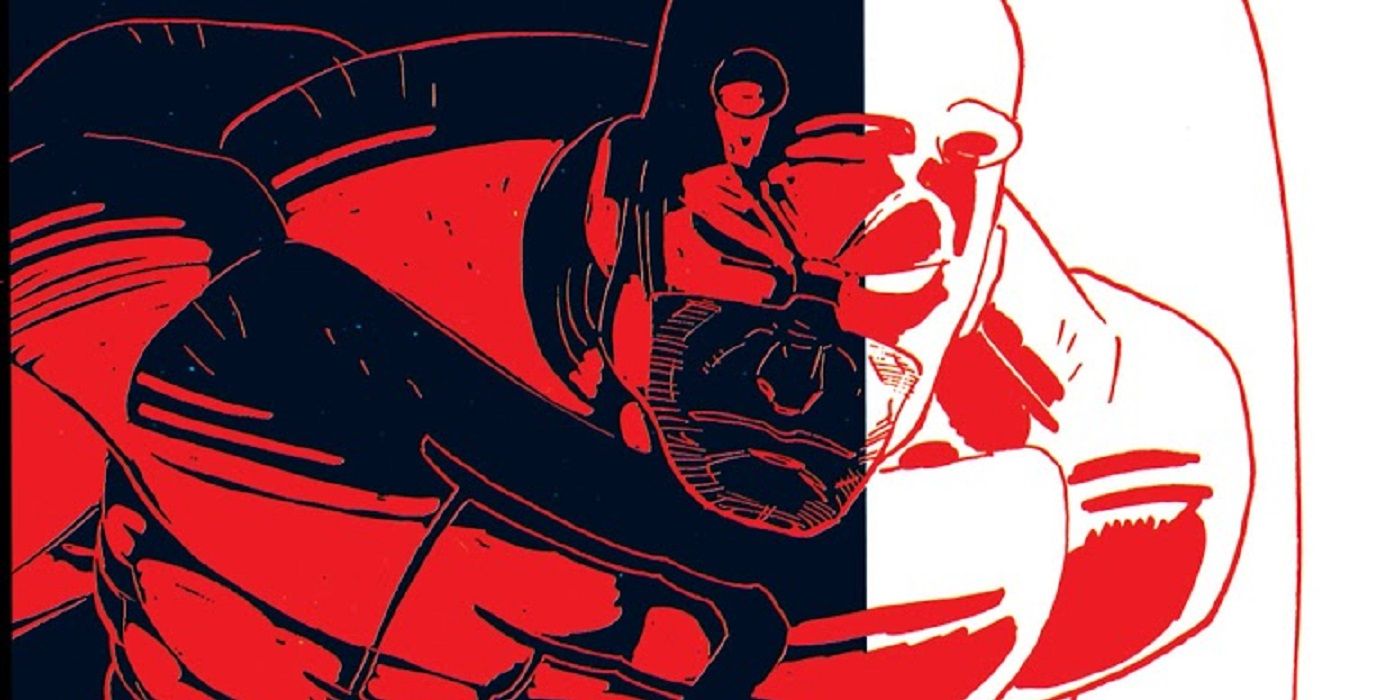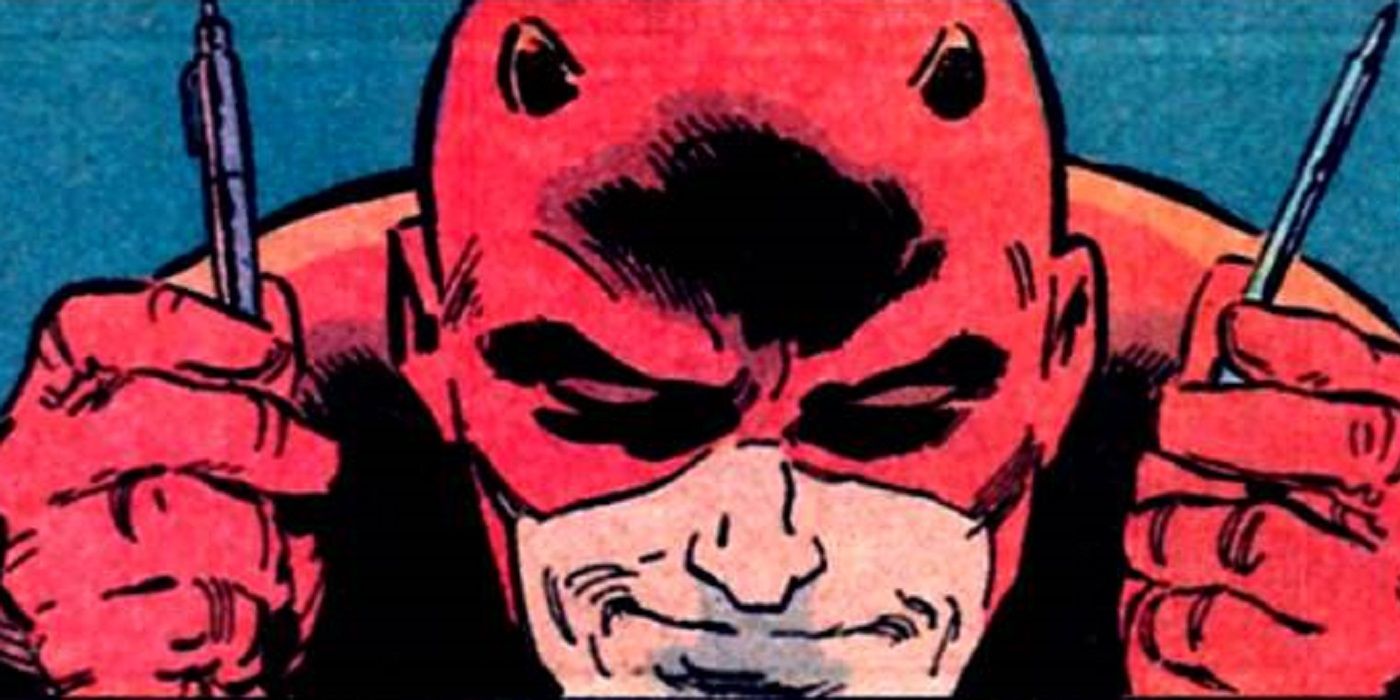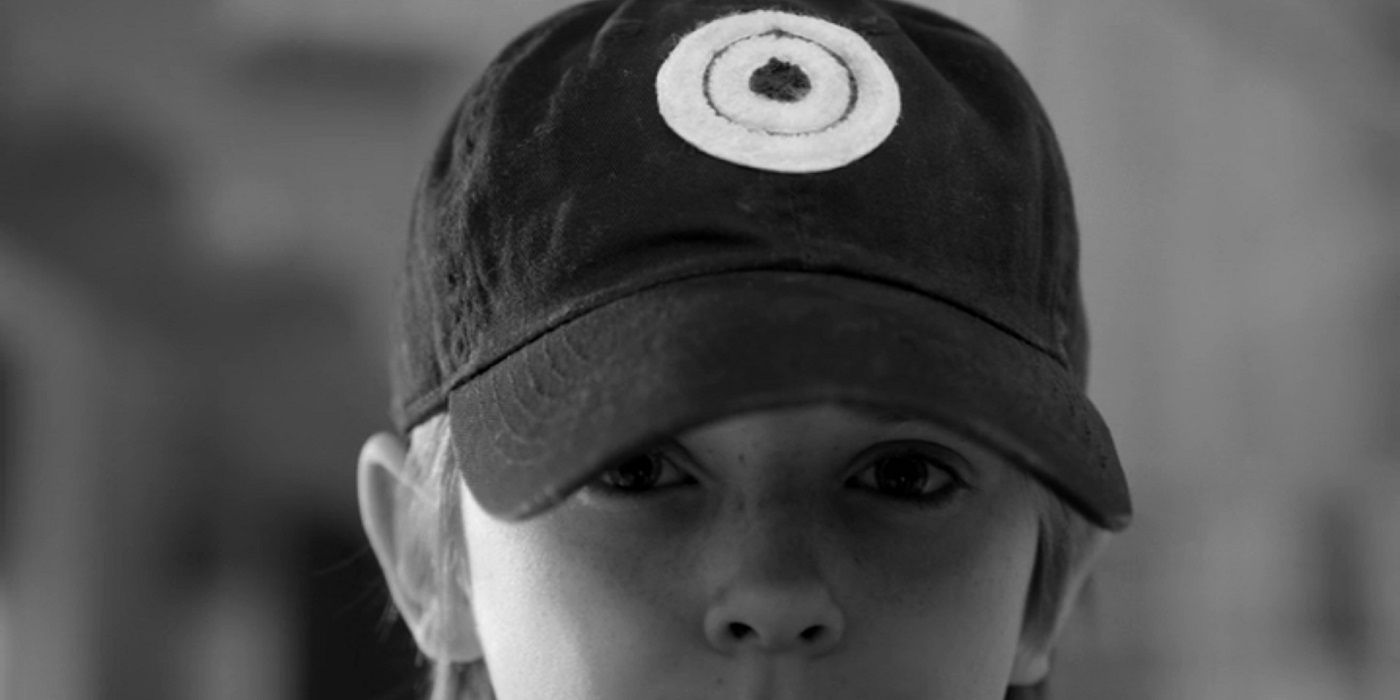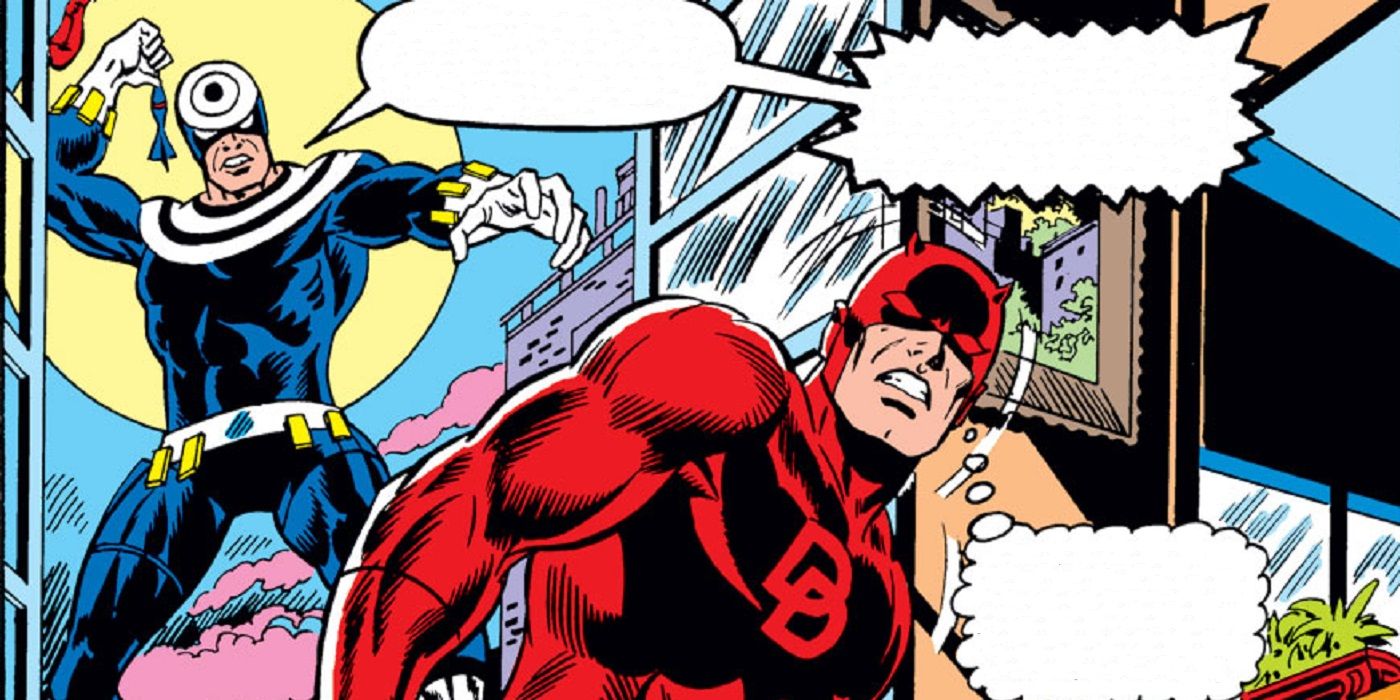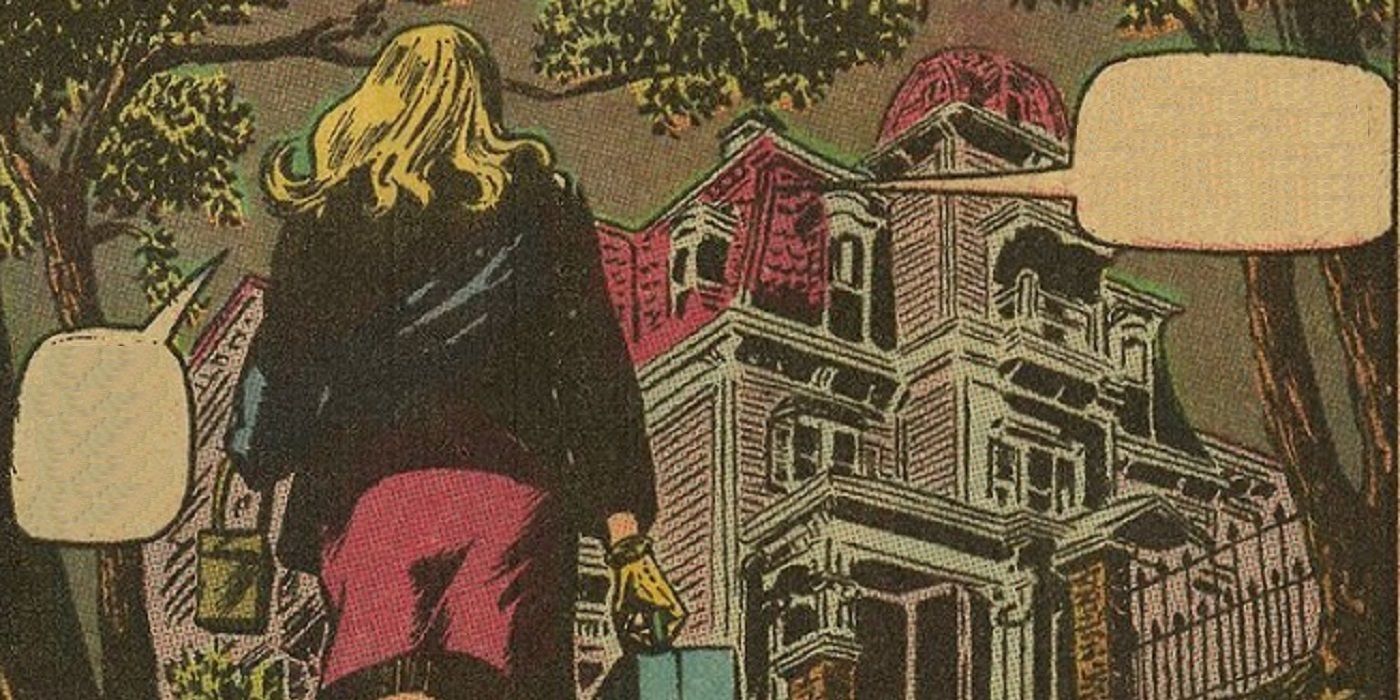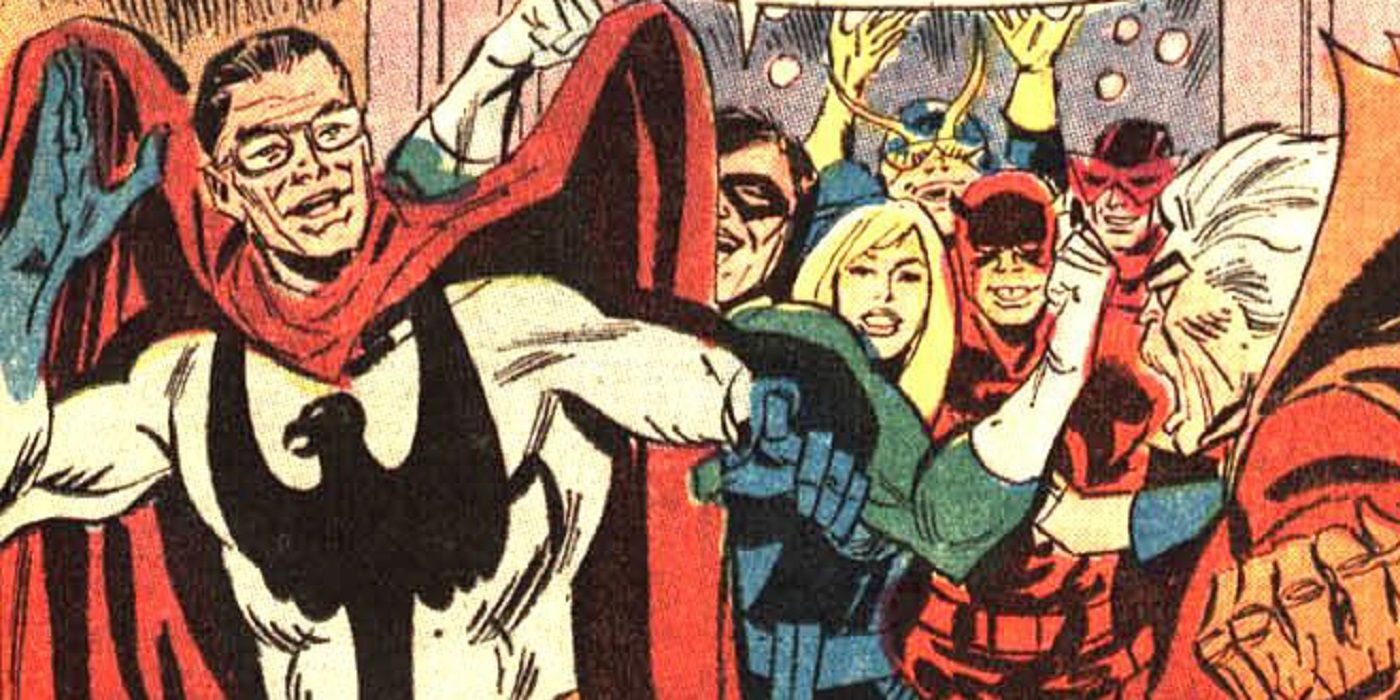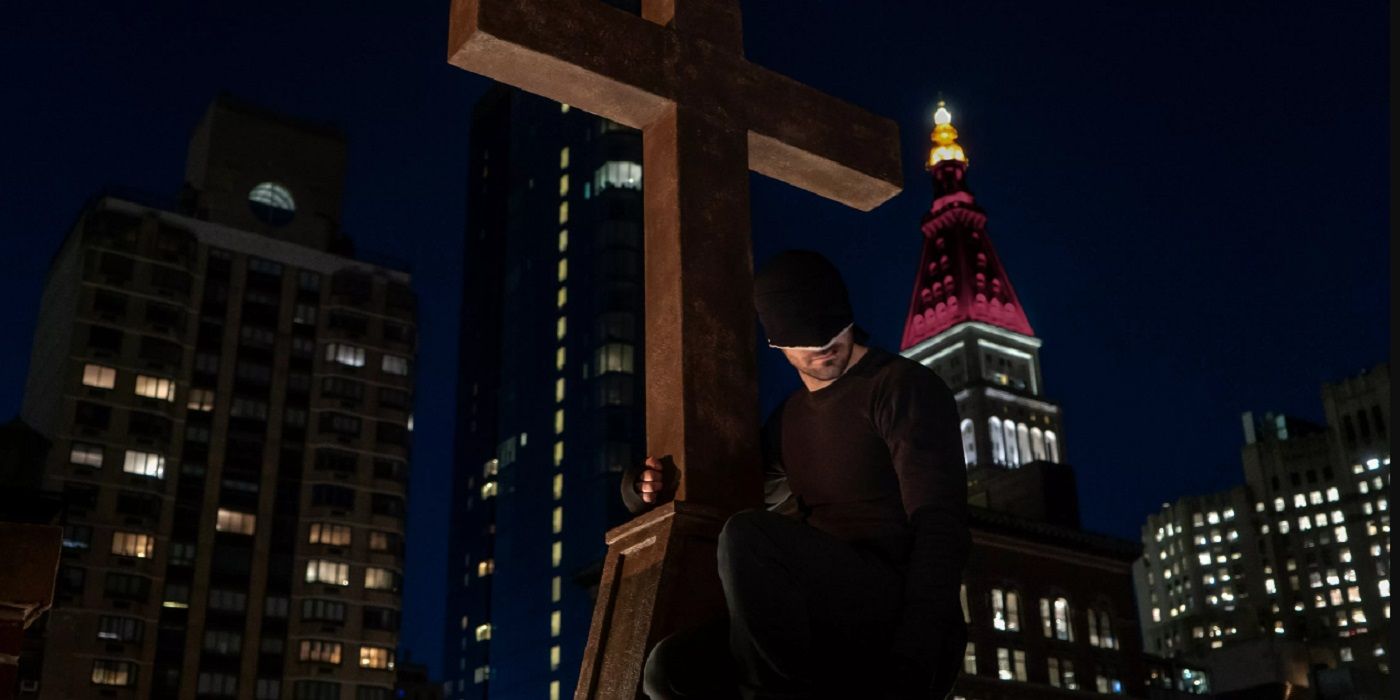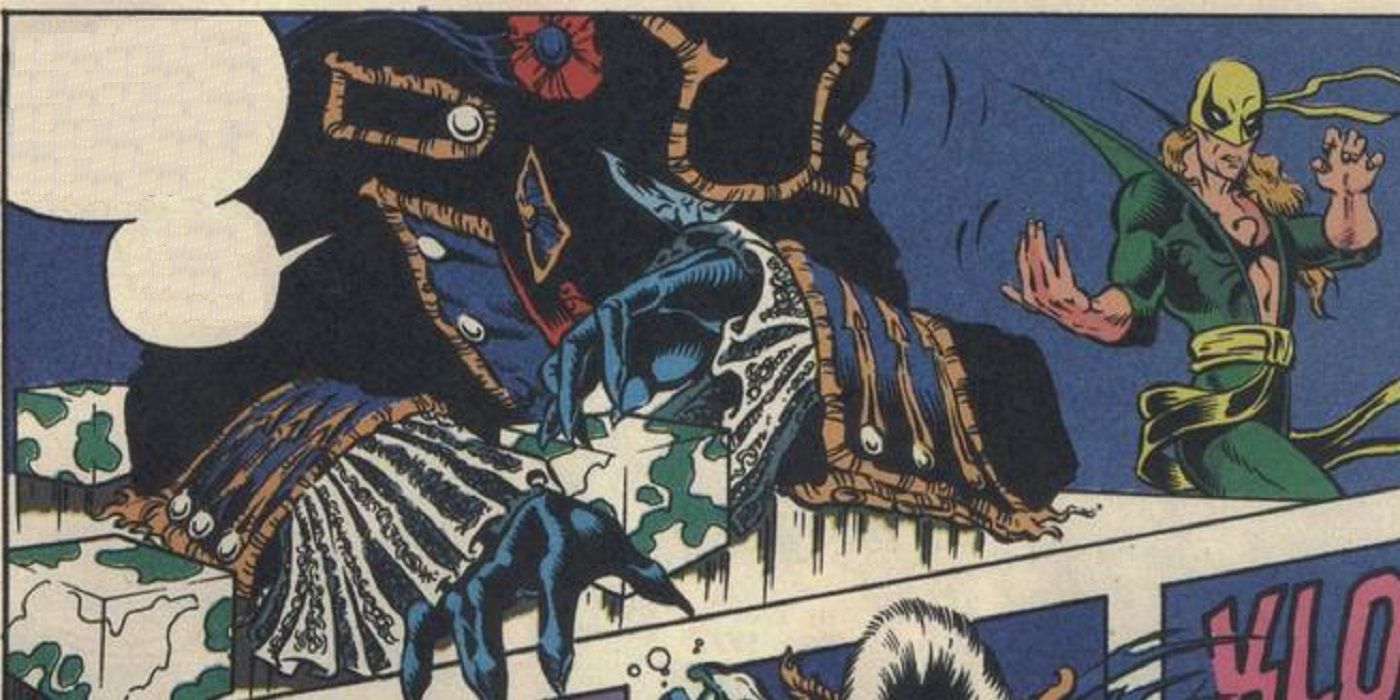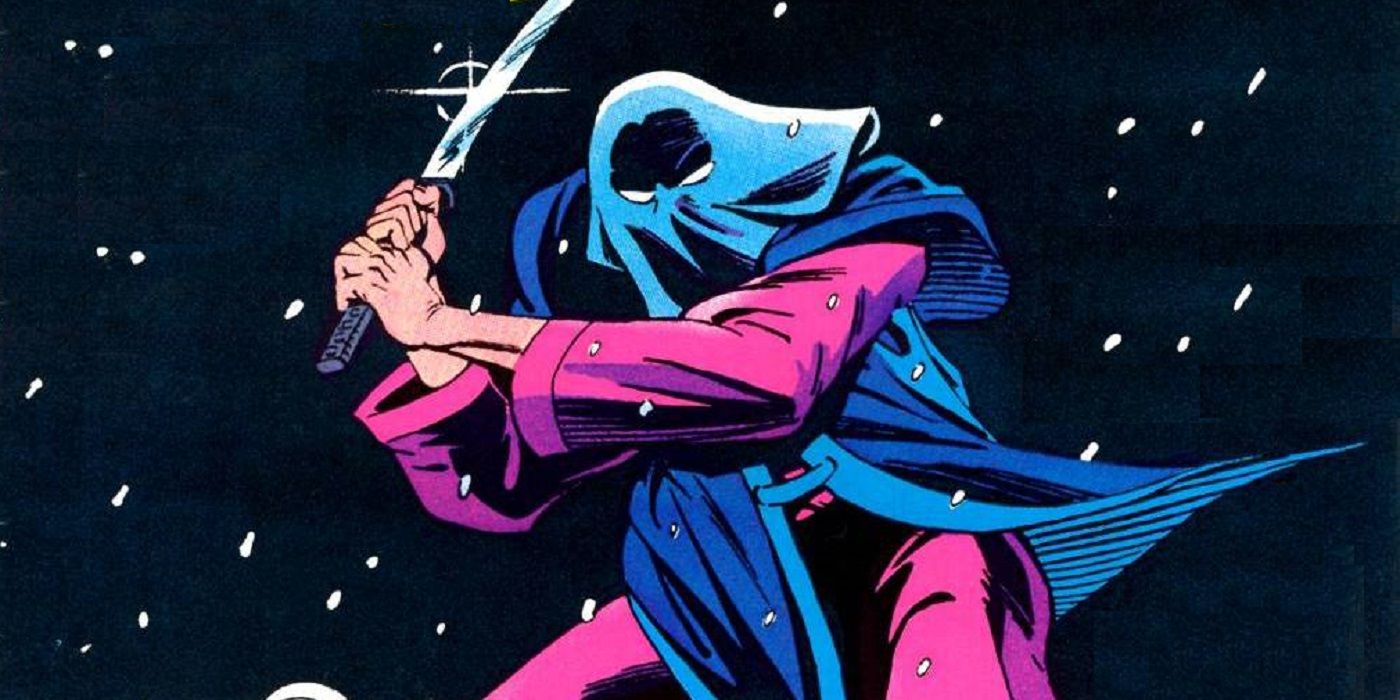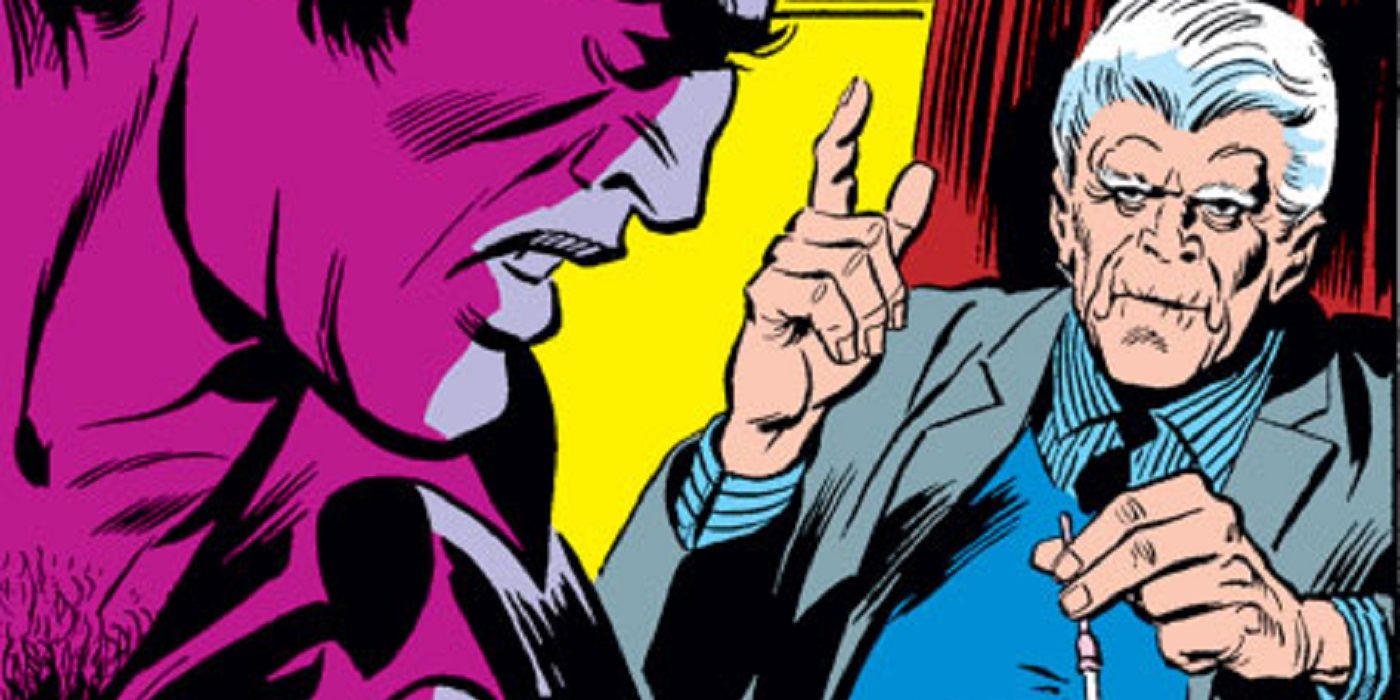Of the six Marvel Netflix series that has been released so far, Daredevil was always the one that had the most comic book history to reference, since Daredevil is the only one of the series to be based on a character who has had their own comic book series for over five decades running now. Only the Punisher could come close to the amount of comic book history to draw on that Daredevil has, so it is of little surprise to see that Daredevil has had the most comic book Easter Eggs and references of all of the series.
Season 3 was no exception, as it was a roundabout adaptation of Frank Miller and David Mazzucchelli's classic Daredevil storyline, "Born Again," and therefore had even more areas for comic book references than normal. Erik Oleson, the showrunner of the series, even noted about this season, "There’s all sort of hidden Easter eggs this season, and I’ll be very curious to see which ones get by the audience — because there’s more than you think there are. We wanted to do something that was a little bit more hardcore…and I think we ended up pulling that off.” Most of these examples are sly references to particular aspects of "Born Again," just with the TV series' own unique twist on them, but there are also many references to other parts of Daredevil's 54-year history and even some surprising TV, comic and video game connections that you would not expect to see in a Daredevil TV series!
20 SPIDER-MEN FACE OFF
One of the coolest Easter Eggs from the first season of Daredevil was a boxing poster in the background of Fogwell's Gym that showed one of the matches that Matt Murdock's dad, Battlin' Jack Murdock, took part in. It was a match with "Crusher" Creel, an actual Marvel Comics boxer who later become the super-villain known as the Absorbing Man.
This time around, the coolest Easter Egg in the series is once again a boxing-related one, as one of the scenes in Fogwell's shows a poster for a bout between Parker and Morales. Those, of course, are the names of the two main Spider-Man characters in the Marvel Universe -- Peter Parker and Miles Morales.
19 AUDIO SPIDER-MAN EASTER EGG
John Paesano is the composer behind the scores of every season of Daredevil as well as the Defenders limited series. Paesano has worked on a number of other projects, including a few different video games. In Daredevil Season 3, Paesano managed to work in references to two of the notable video game franchises that he has scored.
In the recap of Daredevil Season 2, Paesano turned to Clint Mansell's score for Mass Effect 3, specifically the somber "Leaving Earth." Paesano scored 2017's Mass Effect: Andromeda. The second episode of Daredevil Season 3 used a song from Paesano's own score for the recent Spider-Man PS4 video game.
18 BRINGING AGENTS OF S.H.I.E.L.D. INTO MARVEL NETFLIX
A clever way that Daredevil has connected to other Marvel Cinematic Universe properties in the past was through the use of framed headlines in the offices of the New York Bulletin, the newspaper where Ben Urich worked in Season 1 and where Karen Page works in Season 3. In Season 1, there was a reference to the major battle in New York City that took place in the first Avengers film.
This season, while that headline remains, we also got to see a reference to a New York City blackout that appears to reference the blackouts in the city caused by the militant hate group, the Watchdogs, that S.H.I.E.L.D. faced off against in Season 4 of Marvel's Agents of S.H.I.E.L.D.
17 KAREN STILL GIVES IT AWAY
As noted in the introduction, Daredevil Season 3 is generally based on the "Born Again" storyline by Frank Miller and David Mazzucchelli. That story kicked off when a downtrodden Karen Page turned to the only thing she had left in this world to trade for money -- Daredevil's secret identity. That information made its way to Wilson Fisk, who then proceeded to use it to tear Matt's life apart.
Obviously, Karen is in a much better place in her life in the Daredevil TV series, but the show still cleverly made it so that Karen Page is the one who inadvertently confirms to Fisk that Matt is, indeed, Daredevil, when Fisk abruptly questions her about it while she is threatening him in his penthouse.
16 THERE IS NO BODY
Just like in "Born Again," Fisk intends for Matt Murdock to meet an untimely demise in the back of a New York City taxi cab. In the comics, Kingpin has also had the driver of the cab taken care off with Matt's own billy club (with Matt's fingerprints all over the club) to add homicide charges to Matt even after his demise. In the show, the cab was only meant to eliminate Matt.
In both instances, though, Fisk is thrown off his game when he learns that the cab was found and "there is no corpse." The comic book brilliantly repeats that fact as it sinks in for Fisk and the TV series does the same thing, with Fisk's lawyer saying it twice to Kingpin.
15 DAREDEVIL VS. DAREDEVIL!
Another major sequence in Season 3 that was lifted directly from "Born Again" is the idea of Matt Murdock having to fight against a crazed villain dressed as Daredevil. Just like in the comic books, it was Kingpin underling, Felix Manning, who arranged for Melvin Potter to create a second Daredevil suit as part of an attempt to frame Daredevil as a criminal in the eyes of the people.
In both versions of the story, Matt has to fight against the fake-Daredevil to save lives. A big difference is that in "Born Again," the fake Daredevil is just someone Manning lifted from a criminal asylum. Also, in the comics, Manning himself loses his life to the fake Daredevil that he recruited.
14 MELVIN POTTER BECOMES MORE GLADIATOR-LIKE THAN EVER BEFORE!
One of Daredevil's earliest supervillains was the mighty Gladiator, a muscular mountain of a man named Melvin Potter who attacked the hero wearing a modern-day version of a Roman gladiator armor, along with buzz saws on his wrists (you know, just like how Roman gladiators used to wear). Gladiator, though, eventually reformed and became a trusted ally of Daredevil instead.
Potter created Daredevil's costume in the Netflix series and he is blackmailed into helping frame Daredevil in this season, by creating the costume for the fake Daredevil. This time around, Potter was the closest he has ever gotten to his classic Gladiator look, as he is wearing a shirt with the same pattern as his Gladiator costume and he attacks Matt with a buzz saw!
13 THE TAGLINE GETS WORKED IN THERE!
The original "Born Again" storyline is well known for its many classic quotes. Perhaps the most famous of the quotes comes when we see Kingpin, still steaming over the fact that he was unable to end Matt Murdock's life. He first bemoaned the fact that "there was no corpse," but when we check back in with him the next issue, he notes that he has made it so that Matt Murdock has nothing left to lose and a man with nothing to lose is "a man without fear."
That, of course, has been Daredevil's tagline since the series began in 1964. The show cleverly worked it into Season 3 when Daredevil calls Father Lantom "a man without fear" in Matt's eulogy for the priest.
12 BULLSEYE LOVES TO DRESS UP AS HEROES
While the show deviated from "Born Again" by having Bullseye wear the Daredevil costume instead of an anonymous insane criminal, the show still followed a long history that Bullseye has in the comics of dressing up as superheroes to cause trouble. In one notable storyline, Bullseye suffered amnesia and actually believed that he was Daredevil! It took Matt Murdock dressing up as Bullseye to knock him back to reality.
In another notable storyline, "Dark Reign," Bullseye even joined an evil version of the Avengers dressed up as Hawkeye. Clearly, he is the villain most likely to get involved in some cosplay action.
11 A LOGO HISTORY
In the standout episode, "The Perfect Game," we learned the history of Agent Ben Poindexter and saw how he was so easily swayed into becoming Kingpin's chief assassin. Bullseye has had a number of different origins in the comic books, which suggest that no one is exactly certain what his real origins are. One of them, however, does involve him being a masterful baseball pitcher.
The show adopted that version of the origin, only showing him using a trick pitch to end the life of his Little League baseball coach. The logo for Dex's Little League team is, of course, the famous bullseye logo that he would wear in the comics as part of his supervillain costume.
10 APARTMENT ORIGINS
During the mid-1970s at Marvel, when a major new character was introduced, it would typically be a case where Marvel's Art Director at the time, the great John Romita Sr., would design the costume instead of the artist who was actually going to be drawing the character in the comics. Romita designed the costumes for Wolverine, Punisher and, of course, the classic Bullseye costume that debuted in Daredevil #131.
The TV series paid subtle homage to that origin issue, which showed Bullseye coming up with a clever extortion scheme ("Pay me $100,000 or I will end your life"), by having Dex's apartment number be 131.
9 A HINT OF KAREN'S WILD PAST
After leaving Daredevil's comic book series in the early 1970s, Karen Page was in comic book limbo until she ended up working as an actress in Hollywood in the mid-1970s in the pages of Ghost Rider's series. When he left Hollywood a couple of years later, Karen went back to limbo and did not show up again for seven years until she arrived in "Born Again" as an addict who was willing to sell herself for her next score.
In the Karen Page flashback episode, "Karen," Karen jokes with her brother about what her habit might lead her to do for money. While it is a joke on the show, it is a clever reference to how far she actually did fall in the comic books.
8 KAREN GOES BACK TO HER COMIC BOOK PAST
In that same flashback episode, we see Karen's hometown of Fagan's Corner, Vermont, which was first referenced in Season 2 of Daredevil. This was a reference to Karen's actual birthplace in the comics, where she heads to grieve after she believes that Matt Murdock's brother has lost his life while fighting as Daredevil. Karen had been tricked by Matt into thinking that Matt's twin, Mike Murdock, was actually Daredevil and not Matt. "Mike," of course, was just Matt acting and dressing differently to fool Karen. Silver Age comic book plots are fun!
Matt tracked her down to Fagan's Corner and the series broke from standard comic book tropes by actually having Daredevil reveal his true secret identity to Karen when he finds her there.
7 THE WILD ORIGIN OF FAGAN'S CORNER
What's interesting about Fagan's Corner is that the name of the city is its own Easter Egg, just an Easter Egg that goes back to the late 1960s! You see, Tom Fagan was a comic book fan living in Rutland, Vermont in the 1960s who helped organize the annual Halloween parade in Rutland that the city has been holding since 1960. It was one of the first places where people routinely dressed up as superheroes.
Rutland then made a number of appearances in actual comic books, with Tom also showing up in the comics, as well, typically dressed up as Nighthawk. Roy Thomas wrote most of these comic book appearances and Thomas also named Karen's Vermont hometown after Fagan, who sadly passed away in 2008.
6 DAREDEVIL STRIKES A POSE
While "Born Again" is the main comic book storyline that Daredevil Season 3 was based upon, the season also adopted a number of elements from Kevin Smith, Joe Quesada and Jimmy Palmiotti's "Guardian Devil" storyline from 1998.
Quesada's striking artwork, in particular, has often found itself adapted into Daredevil film and TV versions, particularly his drawing of Daredevil perched on top of a church cross. Daredevil showrunner Erik Oleson noted, "There are certain key comic frames that you will recognize on the screen in Season 3. There’s that iconic shot of Daredevil holding onto a crucifix on top of a church. But for people who have no familiarity with the comic runs, it will feel organic and natural — you’ll never even notice it.”
5 KAREN'S SAD COMIC BOOK END BECOMES ANOTHER'S END INSTEAD
Another major moment from "Guardian Devil" that made its way into Daredevil Season 3 was the epic fight between Bullseye and Daredevil that took place in a church. "Guardian Devil" leaned heavily into Daredevil's religious beliefs by having him be forced to become the protector of an infant who may or may not be the Anti-Christ.
Karen Page defends the baby from Bullseye when the villain tries to eliminate the baby by attacking it in the church where Karen is hiding out. Daredevil and Karen manage to protect the baby, but Bullseye uses Daredevil's own bully club to end Karen's life. In the TV series, it is Father Lantom who instead steps in front of the billy club meant for Karen's chest instead of his.
4 BULLSEYE CAN BE REBUILT. WE HAVE THE TECHNOLOGY
In the comics, after Bullseye took the life of Matt Murdock's love, Elektra, Murdock hunted the villain down. They had a long fight along rooftops, train tracks, and telephone wires. Eventually, Bullseye slipped and fell to the ground after he wouldn't allow Daredevil to keep him from falling. He survived the fall, but was left paralyzed. In the TV series, it was Kingpin who broke Bullseye's back.
Just like in the comics, though, he regained mobility through a bonding process that grafted metal on to his spine. In the comics, it was adamantium. Here, it is Cogmium, a little-known metal that made a single appearance in an Iron Fist story in Marvel Comics Presents #137.
3 THE ANSWER IS BLOWIN' IN THE DARK WIND
During Dex's surgery at the end of the season, the most notable moment is when the camera zooms in on his eye and we see a bullseye on his eye, hinting at fully becoming Bullseye. However, that surgery also included a very cool comic book Easter Egg. In the comics, the process where Bullseye had the adamantium grafted on to his spine was originated by a Japanese villain known as Lord Dark Wind.
Dark Wind's real name was Kenji Oyama. The doctor who was performing the surgery on Dex was named, sure enough, Dr. Oyama. In the comics, Oyama's daughter becomes the villainous Lady Deathstrike, who hunts down anyone who had adamantium bonded to them, since the process was stolen from her father.
2 MEDIA MATTERS
After the attack by the fake Daredevil at the offices of the New York Bulletin, the media naturally covered the story heavily. This sequence allowed Daredevil to work in a number of references to past Marvel Cinematic Universe television and radio stations. The three networks shown in the scene were WJBP, WNEX, and WHIH.
WJBP is a TV network that was referenced repeatedly throughout Luke Cage and Iron Fist's series. WNEX is the radio station that hosts Trish Walker's Trish Talk in the Jessica Jones series. Finally, WHIH is the home of reporter Christine Everhart (played by Leslie Bibb), who appeared as a reporter in the first two Iron Man films and then as the host of the YouTube series, WHIH Newsfront.
1 AN ODD AGENT CARTER AND MARVEL COMICS CONNECTION
Nowadays, Marvel comic books and television shows do not feel any need to parse words when it comes to the depiction of crime families like the Mafia. However, back in the 1960s, Marvel was a good deal more circumspect with a number of different topics (like having "zuvembies" instead of zombies) and so when it had characters who were clearly meant to be in the Mafia, it instead had them be part of the "Maggia."
The Maggia ultimately showed up in Season 2 of the Agent Carter TV series and as we can see from Karen Page's notes on Wilson Fisk's criminal empire in Daredevil Season 3, they still exist in the Marvel Cinematic Universe today.

